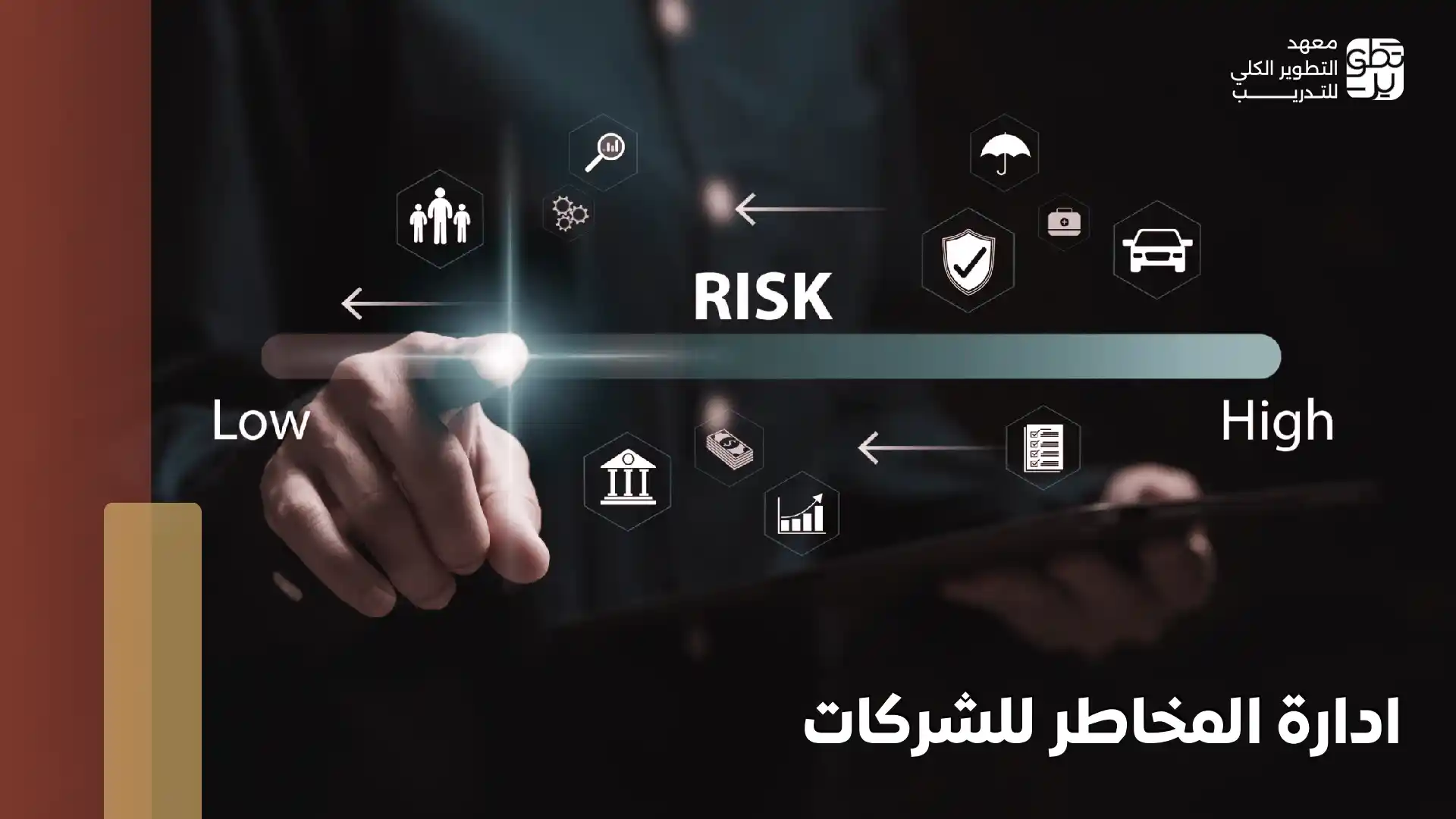
If you are considering specializing in risk management or if this field is part of your current job, this article is for you. Risk management is not just a theoretical term; it is a practical skill that makes a significant difference in the lives of organizations and individuals. Understanding the types of risk management and how to handle them enables you to protect projects, make smarter decisions, and open up great career opportunities in various sectors.
In this field, every piece of knowledge you gain and every experience you develop benefits you personally and helps organizations and teams tackle daily challenges, reduce losses, and ensure continuous success. In the following sections, we will review the different types of risk management, types of risks in project management, and risk management techniques. We will also highlight the exciting opportunities these skills can open for you in the job market.
Types of Risk Management
Risk management is not a one-size-fits-all process; it has various forms and techniques that help organizations face different challenges. Risk management can be divided into five main types, along with practical strategies for applying them.
First: The Five Main Types of Risk Management
The five main types of risk management can be summarized as follows:
- Financial Risk Management: Focuses on protecting the company’s financial goals and includes tools like insurance.
- Operational Risk Management: Addresses risks arising from internal operations, human resources, and systems to ensure the continuity of work without disruption.
- Strategic Risk Management: Related to external factors such as market changes, competition, or government regulations, helping the organization make flexible decisions to protect its market position.
- Legal Risk Management: Involves compliance with laws and contracts. Any neglect in this area may lead to lawsuits or financial penalties.
- Safety Risk Management: Focuses on protecting people, assets, and the environment through safety assessments, continuous training, and adherence to standards.
Second: 10 Risk Management Techniques
Along with the five main types of risk management, organizations can apply various risk management techniques:
- Business Experiments: Testing "what-if" scenarios to understand potential impacts.
- Theory Validation: Using surveys to gather feedback about a product or service.
- Minimum Viable Product Development: Launching a simplified version to reduce financial and marketing risks.
- Risk Segmentation: Addressing gaps early before they turn into crises.
- Adding Buffers: Whether financial or time-related, to avoid surprises.
- Data Analytics: Using both quantitative and qualitative analysis to monitor risks.
- Risk vs Reward Analysis: Balancing potential opportunities with threats before investing.
- Learning from Past Experiences: Documenting previous lessons to avoid repeating mistakes.
- Contingency Planning: Preparing alternatives in case the primary plan fails.
- Best Practices: Applying proven models to minimize risks.
Types of Risks in Project Management
The types of risks in project management vary depending on the nature of the project and its surrounding circumstances. However, they can generally be classified into four main categories:
- Time and Scheduling Risks: Occur when tasks are delayed or deadlines are missed, causing project disruption and increased costs.
- Financial Risks: Include budget overruns, poor cash flows, or being affected by market fluctuations, commodity prices, and currency changes.
- Human and Technical Risks: Arise from human errors, lack of experience, technical failures, or underperforming teams, impacting quality of execution.
- Environmental and Regulatory Risks: Relate to natural disasters, legal and regulatory changes, or sudden administrative decisions that may disrupt the project’s course.
Recognizing the types of risk management in project management early and developing clear plans to address them helps organizations reduce losses and increase the chances of project success. You can contact us to learn more about risk management types and crisis management types.
What is Risk Management and Its Importance?
Risk management is a systematic process aimed at identifying, evaluating, and analyzing potential threats that could affect the stability of an organization, its profits, or its assets. These risks can be financial, operational, legal, technological, or linked to external events such as natural disasters or market changes.
In other words, types of risk management are not just a reaction when problems arise, but a proactive approach that seeks to control future outcomes and reduce the likelihood and impact of risks.
Why is Risk Management Essential in Organizations and Projects?
- Helps protect capital and profits from unforeseen threats.
- Ensures business continuity even during tough times.
- Empowers organizations to control uncertainty rather than being controlled by it.
- Provides opportunities for growth and development because organizations that manage risks intelligently can use crises as opportunities for expansion or repositioning.
Historically, organizations that ignored risk management faced major collapses, such as the global financial crisis of 2008. Meanwhile, companies that implemented diversification and hedging strategies emerged stronger than their competitors.
The Relationship Between Risk Management and Achieving Strategic Goals
Risk management is not only a means of protection but is integral to strategic planning. It:
- Helps make more informed and flexible decisions.
- Supports the organization's ability to compete in volatile environments.
- Reduces the likelihood of failure when expanding or launching new products.
- Contributes to building a strong reputation based on stability and trust.
Thus, successful risk management not only protects the organization from losses but also gives it a competitive advantage and increases its chances of sustained growth. You can contact us to learn more about what risk management is.
Career Opportunities in Risk Management
Risk management is a highly sought-after specialization in the job market due to its crucial role in protecting organizations and ensuring their sustainability. Career opportunities for risk management professionals are available in several key sectors, including:
- Banks and Financial Institutions: To monitor credit risks, market risks, and ensure compliance with financial regulations.
- Insurance Companies: To analyze risks, estimate compensation, and develop loss mitigation strategies.
- Energy Sector: Particularly in oil, gas, and electricity, where operational and environmental risks are prevalent.
- Large Projects and Infrastructure: To manage financing, execution, and operational risks, ensuring the sustainability of projects.
Additionally, the demand for risk management professionals is growing in fields like healthcare, IT, and management consulting.
How to Obtain a Certified Risk Management Certification
Risk management certifications have become qualifications that employers look for to ensure specialists have the knowledge and skills to handle various types of risks.
Major Global and Local Certifications:
- Global Certifications: Such as (Certified Risk Manager - CRM), (Project Management Professional - PMP with Risk Management specialization).
- Local Certifications: Offered by some universities and accredited institutes in Saudi Arabia and the Arab world, aligned with the local job market and Vision 2030.
Steps to Obtain Certification:
- Choose the right training program and certification body.
- Attend the training course and pass the required exams.
- Meet prerequisites, such as practical experience for some certifications.
- Apply for the final exam and receive official accreditation.
How These Certifications Enhance Job Opportunities:
- Provide a competitive edge in the job market.
- Prove the ability to handle financial, operational, and strategic risks.
- Open doors to employment in vital sectors like banking, insurance, and energy.
- Aid in career advancement and increase trust from employers and clients.
Do you want to learn more about specialized risk management training programs or other certified professional courses?
Contact us at the MDIT to learn the difference between risk management and crisis management, and to get details on the available courses, workshops, and certifications that enhance your career path and open new horizons in the job market.
Frequently Asked Questions
What Are the Principles of Risk Management?
The principles of risk management are the rules or foundations that guide the risk management process to make it effective and organized, such as integrating all activities within the organization, adopting an overarching structure, adapting to change, and using the best available information.
What Are the Tools of Risk Management?
Risk management tools are the means and techniques that organizations use to implement the risk management process—such as checklists, risk registers, risk analysis software, probability-impact matrices, and project management software integrated with risk features, among others.











